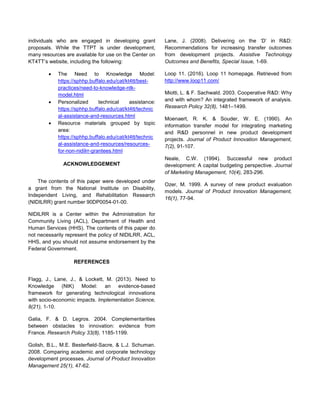This document outlines the development of a Technology Transfer Planning Template (TTPT) aimed at enhancing technology transfer and commercialization efforts for assistive technologies. It addresses common challenges in the technology transfer process and emphasizes the importance of project planning, incorporating feedback from stakeholders to improve usability and effectiveness. The TTPT will assist investigators in creating plans that align with best practices in new product development, with a focus on usability and resource allocation.



